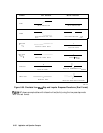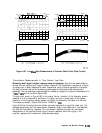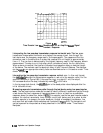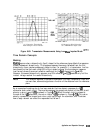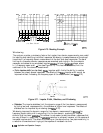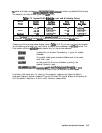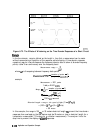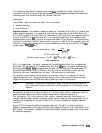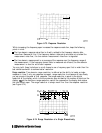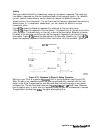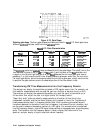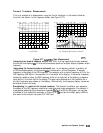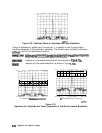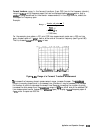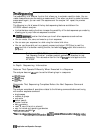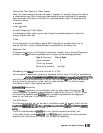
CHl
START 570
ps
STOP 2.505
ns
pg682d
Figure 6-73. Response Resolution
While increasing the frequency span increases the response resolution, keep the following
points in mind:
w
The time domain response noise floor is directly related to the frequency domain data
noise floor. Because of this, if the frequency domain data points are taken at or below the
measurement noise floor, the time domain measurement noise floor is degraded.
w
The time domain measurement is an average of the response over the frequency range of
the measurement. If the frequency domain data is measured out-of-band, the time domain
measurement is also the out-of-band response.
You may (with these limitations in mind) choose to use a frequency span that is wider than the
test device bandwidth to achieve better resolution.
Range resolution.
Time domain range resolution is defined as the ability to locate a single
response in time. If only one response is present, range resolution is a measure of how closely
you can pinpoint the peak of that response. The range resolution is equal to the digital
resolution of the display, which is the time domain span divided by the number of points on the
display.
lb
get the maximum range resolution, center the response on the display and reduce
the time domain span. The range resolution is always much liner than the response resolution
(see Figure 6-74).
CHl
Sll
me
1
mU/REF
4 mU
1:
7.4215 mU
14
/
1.321
ns
1
COC
MARIER
1
\
1.321
ns
396.03
m
TI
/I
1x1
I
I
I\I
I
I
I I I
I
I
I
I I I
I
\I
CHI
START
1078
ns
STOP
I.505
ns
pg683d
Figure 6-74. Range Resolution of a Single Discontinuity
6-140
ApplicationandOperationConcepts



